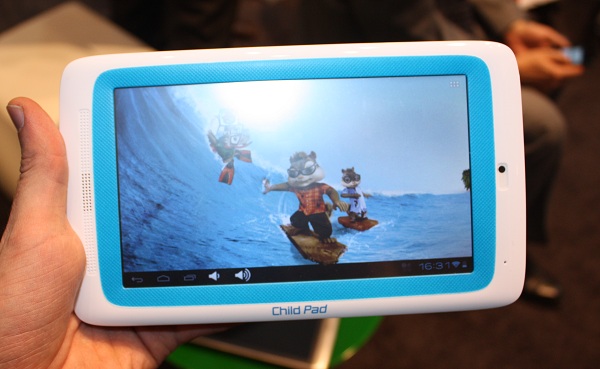Why do I need one or multiple mobile/tablet device(s) in my early learning classroom?
The Digital Camera - The invaluable tool in the early childhood classroom, answers this question.
A digital camera is a tool for creative teaching in
the early childhood classroom. There are many uses for a digital camera in
contributing to the early learning environment. Digital cameras can be used as
a tool in:
1. Organizing
the classroom
 In a preschool classroom, digital photos can be used
to label bins and storage spaces so that children have a visual representation
of where things belong. These labels should also be accompanied by the written
word for the item(s), as a means to enhance their literacy skills. Photos of
the children can be used for labeling cubbies, job charts, daily schedules and
for various art projects.
In a preschool classroom, digital photos can be used
to label bins and storage spaces so that children have a visual representation
of where things belong. These labels should also be accompanied by the written
word for the item(s), as a means to enhance their literacy skills. Photos of
the children can be used for labeling cubbies, job charts, daily schedules and
for various art projects.These are examples of photo labels that are used in my early learning classroom.
2. For projects
The use of digital photos can also be used in
classroom projects, such as when making a classroom book. One such project is
making a classroom book based on ‘Brown bear, brown bear, what do you see?’ by
Bill Martin (Author), Eric Carle (Illustrator). Teachers can photograph each
student in the classroom wearing different color clothes. Teachers then print
the pictures and put one picture on each page of the classroom book. With the
help of teachers, each student can have the opportunity to be the author of a
page of the book.
For example:
Mary is wearing pink,
Give us a wink.
John is wearing yellow,
Give us a big hello.
They can write about themselves and the book can be
titled ‘We like colors’. The students will enjoy seeing themselves and at
the same time learn to read the pages over and over again, improving their
literacy skills. Here are examples from a book made in my early learning classroom.
3.
In documenting student’s learning
experiences
Teachers
can photograph each experience, print the pictures or use the pictures as a
means to communicate with the students’ families to illustrate activities that
happen during classroom time. Families love to see pictures of their children engaged
in activities.
 For
example, teachers can photograph experiments that take place in the classroom,
and then display them along with documentation on children’s predictions and
reactions to the activity. Teachers can also post photos from field trips or
other special events on a school bulletin board. It is a wonderful visual
communication tool to use with families.
For
example, teachers can photograph experiments that take place in the classroom,
and then display them along with documentation on children’s predictions and
reactions to the activity. Teachers can also post photos from field trips or
other special events on a school bulletin board. It is a wonderful visual
communication tool to use with families.These animal masks (using faces of students) were made after our field trip visit to the zoo.
4. Allowing
students to actually use a camera by themselves is a wonderful learning
experience. Not only will they be learning how to use the technology
first-hand, but allowing students to take photos themselves teaches them about
the art of photography. By allowing young learners to experiment with
technology in this way enhances their overall learning environment.
For example, in a photography and color activity, teachers can send students to go around the school with an IPad photographing all objects that are blue.
Guiding principles for using the digital camera in the classroom
· Learn
about your digital camera on your Smartphone or on the IPad
Take time to learn and
practise, so that you can take full advantage of the various things it
can do
·
Be
prepared
Make sure that the batteries are
regularly charged and images are downloaded from the
memory card onto your
computer’s hard drive
·
Organize
your photos
Learn to manage your photos on your computer to save
time when you review, organize,
use and print your photos
·
Back
up your images
Copy digital photos to a CD,
DVD, memory stick, and external hard drive or onto your Cloud
on a regular
basis, before your computer crashes or before you accidentally delete a picture
·
Show
the learning in action
Zoom in to capture details of
a scene or an expression. Zoom out to show interactions
between children. Add
comments to help people understand what the students are learning
·
Get
written permission
Ask parents or guardians to complete
written consent forms, explaining how children’s
images will be used, that give
permission to take and use photo images of children and their
work
References:
(Accessed on 23 March 2015)
http://tyc.naeyc.org/articles/digital/pdf/digital.pdf
http://www.examiner.com/article/using-a-digital-camera-the-early-childhood-classroom




